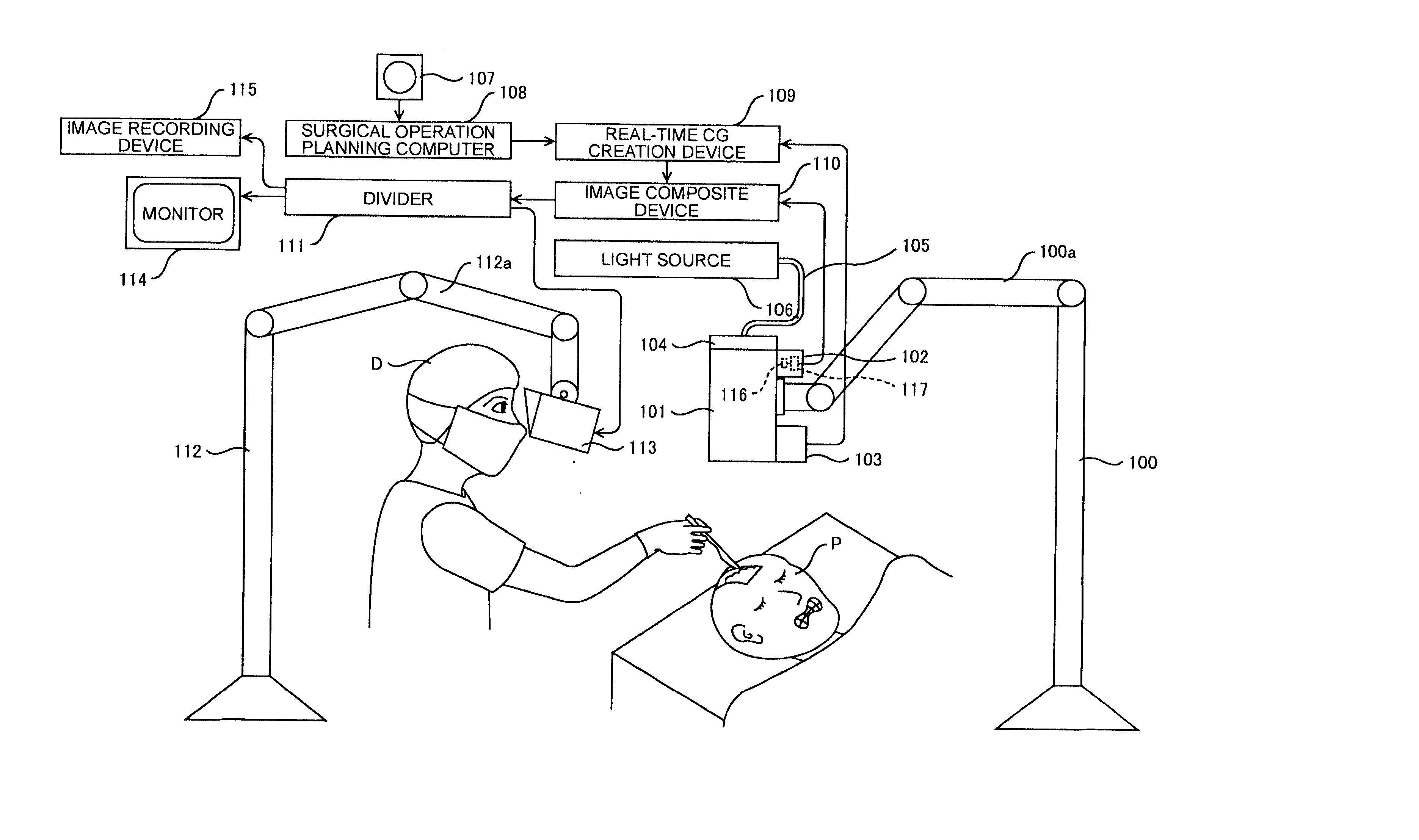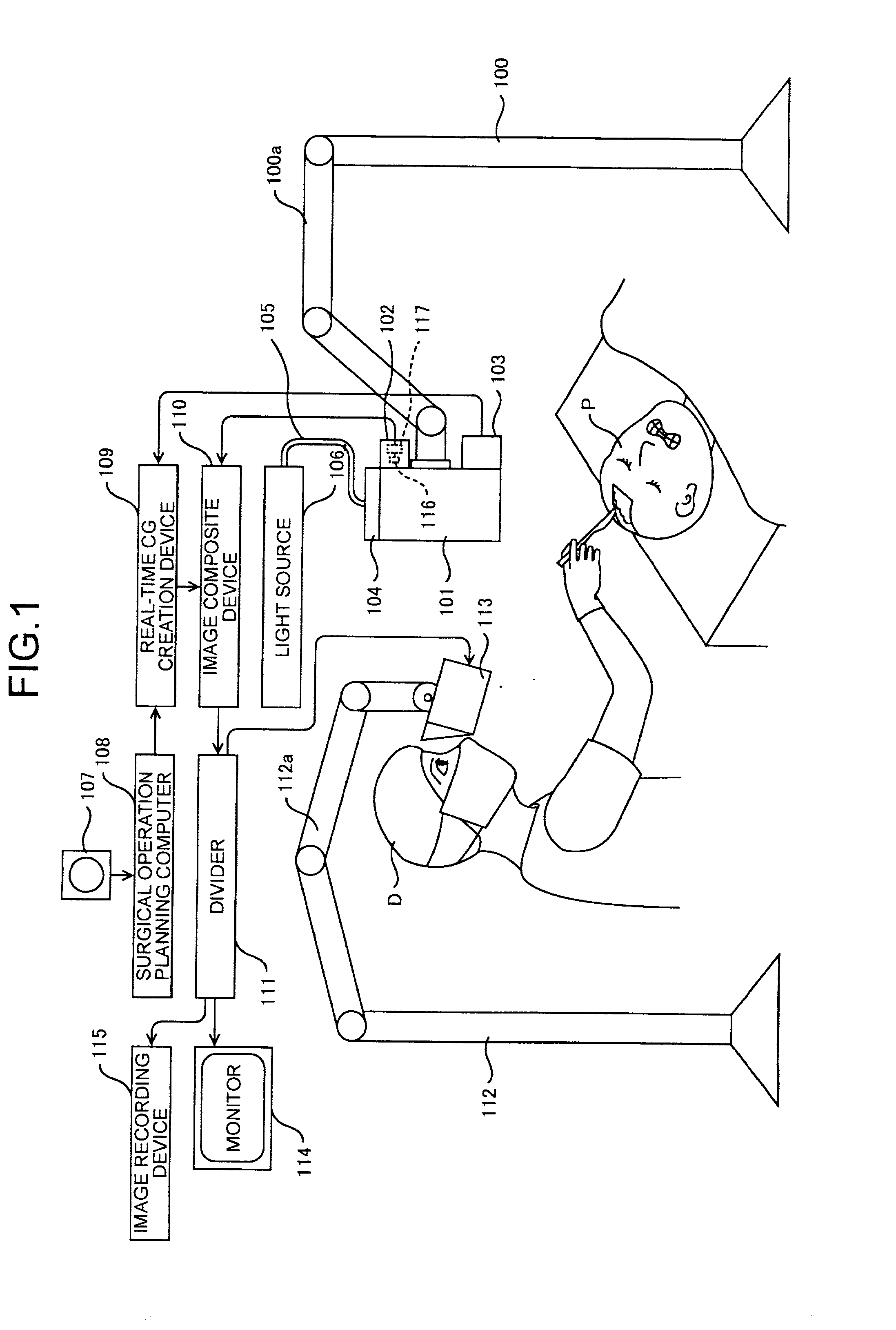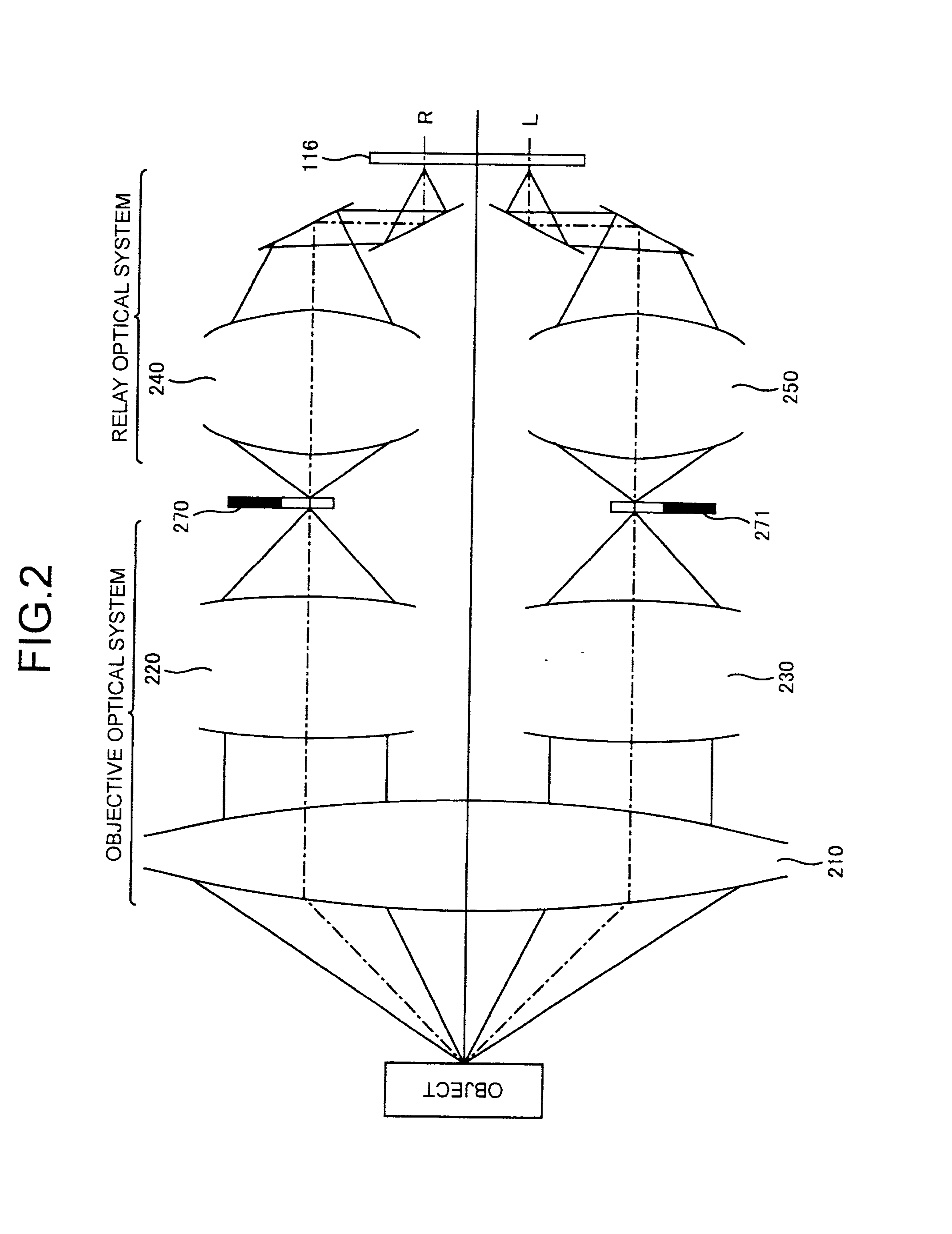Stereoscopic microscope
a microscope and microscope technology, applied in the field of stereoscopic microscopes, can solve the problems of difficult to distinguish minute tissues of intricate organs, other staff, nurses, interns,
- Summary
- Abstract
- Description
- Claims
- Application Information
AI Technical Summary
Benefits of technology
Problems solved by technology
Method used
Image
Examples
second example
[0113] FIG. 11 shows the image taking optical system 200 of the second example in the developed fashion. The numerical constructions thereof are described in TABLE 2. The elements are indicated by the same surface numbers as the first example.
[0114] In the second example, the focal length of the close-up optical system 210 is variable in the range of 532.3 mm through 645.3 mm, and the imaging magnification M.sub.R of the relay optical systems 240, 250 is -1.5.
4TABLE 2 Surface Number r d n .nu.d 1 -440.000 6.50 1.51633 64.1 2 164.547 9.20 1.62004 36.3 3 472.000 30.34 4 403.219 5.40 1.80518 25.4 5 141.500 16.50 1.67003 47.3 6 -292.600 35.66 7 96.650 2.00 1.67270 32.1 8 32.889 5.50 1.61800 63.4 9 321.250 0.20 10 42.000 4.00 1.61800 63.4 11 154.980 8.12 12 -199.500 1.50 1.83400 37.2 13 6.892 3.70 1.84666 23.8 14 18.878 30.41 15 -15.142 1.20 1.48749 70.2 16 .infin. 18.30 17 19.083 3.80 1.49700 81.6 18 -19.083 0.50 19 26.525 4.50 1.48749 70.2 20 -11.258 1.00 1.83481 42.7 21 3-78.000 21.52...
third example
[0115] FIG. 12 shows the image taking optical system 200 of the third example in the developed fashion. The numerical constructions thereof are described in TABLE 3. The elements are indicated by the same surface numbers as the first example.
[0116] In the third example, the focal length of the close-up optical system 210 is variable in the range of 532.3 mm through 645.3 mm, and the imaging magnification M.sub.R of the relay optical systems 240, 250 is -1.875.
5TABLE 3 Surface Number r d n .nu.d 1 -440.000 6.50 1.51633 64.1 2 164.547 9.20 1.62004 36.3 3 472.000 30.34 4 403.219 5.40 1.80518 25.4 5 141.500 16.50 1.67003 47.3 6 -292.600 35.66 7 77.320 1.60 1.67270 32.1 8 26.311 4.40 1.61800 63.4 9 257.000 0.16 10 33.600 3.20 1.61800 63.4 11 123.984 6.49 12 -159.600 1.20 1.83400 37.2 13 5.514 2.96 1.84666 23.8 14 15.102 24.34 15 -12.114 0.96 1.48749 70.2 16 .infin. 14.64 17 15.266 3.04 1.49700 81.6 18 -15.266 0.40 19 21.220 3.60 1.48749 70.2 20 -9.006 0.80 1.83481 42.7 21 -302.400 17.22 ...
fourth example
[0117] FIG. 13 shows the image taking optical system 200 of the fourth example in the developed fashion. The numerical constructions thereof are described in TABLE 4. The elements are indicated by the same surface numbers as the first example.
[0118] In the fourth example, the focal length of the close-up optical system 210 is variable in the range of 532.3 mm through 645.3 mm, and the imaging magnification M.sub.R of the relay optical systems 240, 250 is -2.0.
6TABLE 4 Surface Number r d n .nu.d 1 -440.000 6.50 1.51633 64.1 2 164.547 9.20 1.62004 36.3 3 472.000 30.34 4 403.219 5.40 1.80518 25.4 5 141.500 16.50 1.67003 47.3 6 -292.600 35.66 7 72.487 1.50 1.67270 32.1 8 24.667 4.12 1.61800 63.4 9 240.937 0.15 10 31.500 3.00 1.61800 63.4 11 116.235 6.08 12 -149.625 1.12 1.83400 37.2 13 5.169 2.78 1.84666 23.8 14 14.159 22.82 15 -11.357 0.90 1.48749 70.2 16 .infin. 13.72 17 14.312 2.85 1.49700 81.6 18 -14.312 0.38 19 19.894 3.38 1.48749 70.2 20 -8.444 0.75 1.83481 42.7 21 -283.500 16.14 ...
PUM
 Login to View More
Login to View More Abstract
Description
Claims
Application Information
 Login to View More
Login to View More - R&D
- Intellectual Property
- Life Sciences
- Materials
- Tech Scout
- Unparalleled Data Quality
- Higher Quality Content
- 60% Fewer Hallucinations
Browse by: Latest US Patents, China's latest patents, Technical Efficacy Thesaurus, Application Domain, Technology Topic, Popular Technical Reports.
© 2025 PatSnap. All rights reserved.Legal|Privacy policy|Modern Slavery Act Transparency Statement|Sitemap|About US| Contact US: help@patsnap.com



